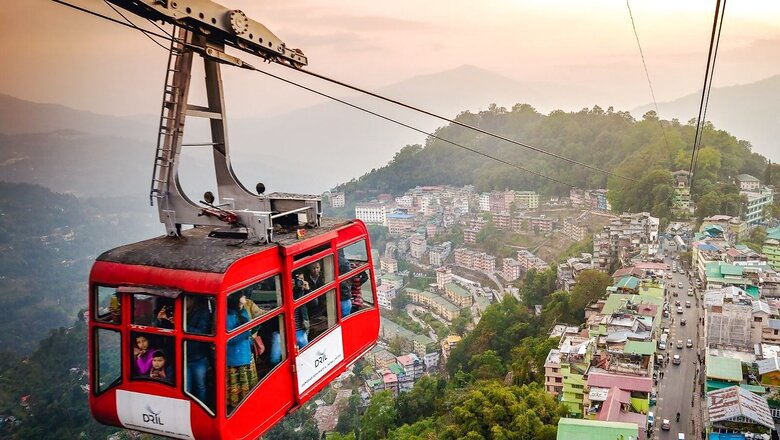
views
How do we make ropeways safer?
The Jharkhand ropeway accident has brought to light a form of transport that is rarely talked about – cable cars. If you think hard, you will see that the entire concept of a ropeway is extremely simple, which is to say, that a ropeway is a rather complicated form of a pulley system. Some of the most popular examples of this system would also be ski lifts that we have often seen in Instagram reels and movies, except that in India, we have a metal cabin attached to the bottom of it instead of a bench.
And if we think of how can these be made safer, there are two arguments to be made. First, either these systems can be thought of once again, with a fresh approach, and infuse the tried and tested pulley-brake formula with the modern technological advancements that other modes of transport have made. Things like fitting the cabin with airbags, a deployable parachute that opens in case of the cabin is detached from the rope or even an integrated Internet of Things (IoT) system where the cabin relays real-time information of any issues or potential failures to systems placed at both ends of the ropeway, at the docking stations, and then this information is relayed to a central system where a failure or an accident can be recorded in real-time – and subsequently – help can be provided in the quickest way possible.
The possibilities are frankly endless until we make these ropeway systems on par with airplanes and airports, only to realise that even planes do crash.
The second school of thought is that it is this exact simplicity of the ropeway being a pulley system is that makes it affordable for tourism boards in the first place and allows them to offer tickets not at flight prices! Additionally, being simple means that these systems can be made and implemented at a variety of places with different weather, terrains and even distances. The cable car operators too can be brought up to speed with how these things work in a rather short time. On top of it all, it has to be affordable for those building this system, for those using this system, and profitable enough for them to deploy at all.
After all, the ropeway system is supposed to allow the travellers ease of access and allow tourists to soak in the surroundings at a moderate pace.
With all this in mind, what should be the future of ropeways and how should they be made safer? Well, to answer that first we need to take a look at the past. Ropeways are actually quite safe already when you take into account the number of accidents that have happened, not only in India but across the world, which is only a handful.
So this brings us back to the original question, how can ropeways be made safer? The answer actually lies in between the two schools of thought mentioned above. We don’t need to reinvent the wheel when it comes to the cable car system instead, the focus should be on the maintenance and operation of these cable cars being done properly. And this should be applied at the docking stations where the cable car operators are educated on what to do in case of an emergency or an accident – and not flee the spot as it happened at the Trikut ropeway accident in Jharkhand – and that there should be a better communication system which allows for quicker recognition of a potential fault and a faster deployment of rescue operations in case of an accident.
Also Read: Jharkhand Ropeway Accident: Where Are The Drone Delivery Startups Now?
For reference, as per Jharkhand Tourism, the Trikut ropeway is India’s highest vertical ropeway with a maximum lens angle of 44 degrees. The ropeway, situated around 20 km from Baba Baidyanath Temple, is around 766-metres-long, while the hill is 392-metres-high. There are 25 cabins in the ropeway. Four people can sit in each cabin.
And if a ropeway system can continue to have the confidence of tourists and travellers in this world of fast-paced helicopter services and flights, perhaps ‘soaking in the view’ will continue to be a blessing and not a thing of the past.
Read all the Latest Auto News and Breaking News here


















Comments
0 comment